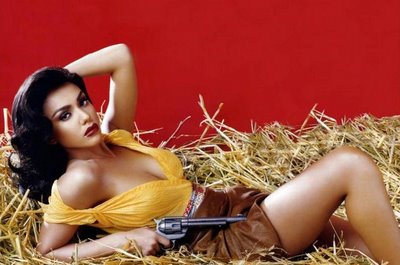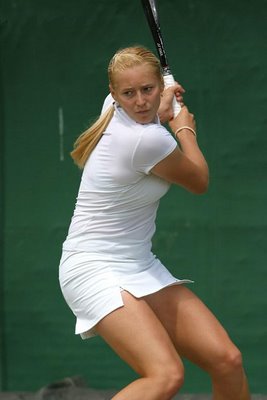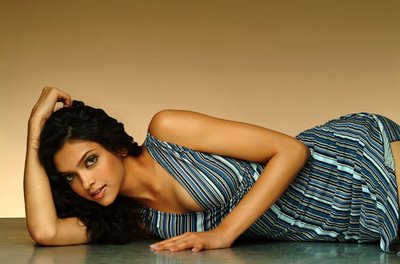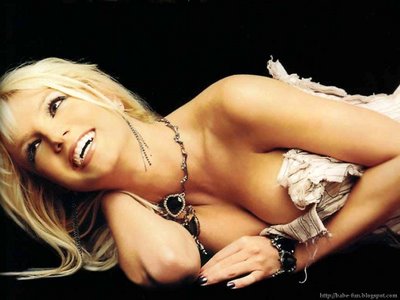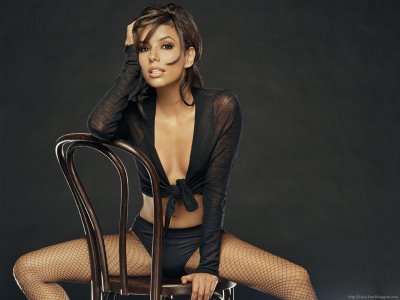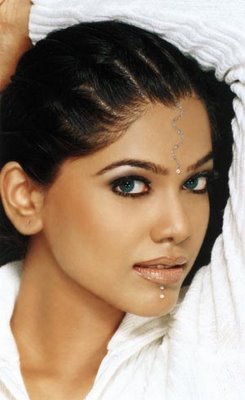|
|---|
Saturday, September 30, 2006
Lara made her film debut in 2002 with the Tamil movie Arasaatchi. She won the Filmfare Best Debut Award for the film.
Thursday, September 28, 2006
In Maxim magazine's 2006 Hot 100, Jessica Alba came in 2nd, after Eva Longoria.
In Australia's and Norway's FHM magazine Jessica Alba was voted 1st in the FHM Sexiest 100 for 2006.
CNN reports:
Mo Xiaoxin, a 56-year-old assistant professor at a university in Changzhou, in eastern Jiangsu province, shocked students by stripping during a lecture on "body art" to emphasize the "power" of the body and to "challenge taboos," the Beijing News said.
"There are no taboos in the field of research, but to do this directly in the course of teaching is obviously not appropriate," the paper quoted Tian Junting, a culture ministry official, as saying.
The lecture was part of a course within a newly established "human body art and culture" research institute -- China's first -- at Jiangsu Teachers University of Technology, the paper said.
Mo arranged for four other models, including a man and woman in their 70s or 80s, and a younger couple, to strip naked in front of the class while he lectured, the paper said.
Scandal? Or trivial event? Are we to see this through the eyes of an art critic for whom a naked body is just another element of artistic expression? Or should we rather interpret it from the students' point of view? Would it then be an indecent act, a very embarrassing one? Of course, the article says little about the context of the class. It was part of an experimental course on body art. But was it a practical course? Is a practical course in body art actually possible? I've heard of body art workshops where people were encouraged to self-mutilate. How exactly does that work? Does one train various techniques, until one gets them right? Is there a set of "exercises" one has to execute to pass?
If we accept that a significant part of contemporary art looks to go "out of the box", teaching it becomes a challenge. Trust me, I know. The whole idea is how to get someone to accept the excentric as central, i.e., how to see ("alternative") contemporary art as a basis, or a context for work. This is extremely difficult, much more difficult than just learning to appreciate it. On one hand, the students need to comprehend the strength of new works, the impact they potentially have; on the other, it's not enough to see it in a distance, in an attitude of all-encompassing tolerance. This - body art, performance, controversial or plain shocking installations - is to be, if not a foundation, at least a contemporary history. That means, it needs to be close enough to be useful, to be felt as something we might have done, but (often fortunately) don't need to do any more.
Does this mean the teacher was right? Only if he achieved his goal. Only if the people watching him not only got the point (their point, not necessarily his point), but also, will feel empowered through the experience.
But teaching it? Or: actually doing body art (if getting naked comes anywhere near as much as an introduction to body art) in front of the students? Two points irritate me here:
1) A teacher that instead of making the students discover things by doing them does them himself is at least suspicious. I'd rather have a scandal where the teacher convinced students to actually do body art. At least then, they are the performers, and not just forced spectators. The article states that the teacher tried making the students undress too. It seems it didn't work. Was there any room left on the stage?
2) On a more personal level, art that aims to "break taboos" rarely ever speaks to me. It's not too hard to watch. It's too easy. As one ex-body artist said, the performers are not the only ones sweating. The audience sweats too - of a specific embarrassment and more often than not, a deep desire to be somewhere else.
My doubts regarding Mo Xiaoxin are both as a teacher and a perfomer. But they have little to do with indecence.
Labels: controversial, performing
Wednesday, September 27, 2006
Flowing in the baroque wilderness of fleshy forms, diving into the realm of whatifs and whynots, is a delicious project called pixelnouveau. Explore it, get lost in it as I did, discover the scent of digital daydreaming...
As any truly experimental project, it has its more and less successful bits - some works seem a little unfinished, as if not nurtured. Also, the navigation is absolutely complicated - but that makes it easier to wander aimlessly, appreciate whatever comes up, and not get the false impression that you're in control. The general feeling is of a rich, dense garden, whose sense still evades me. (Though not the senses).
hint for the desperate explorers: once at pixelnouveau, scroll to the right.
Labels: design/architecture, digital, painting/photo
I'm sorry. The post from two days ago was bad. I'm putting it offline and leaving only a minimalist version.Claes Oldenburg and Coosje Van Bruggen, Cupid's Span
Size matters? How exactly?
----
Kant's distinction between aesthetic experience and sublime experience could mean that, for instance, when visiting a pyramid I am so overwhelmed by it, the experience ceases to be aesthetic and becomes sublime. If we hold on to this distinction, we could risk saying that the experience of art may be similar if it belongs to the same category: in this example, the Louvre pyramid can have a strong aesthetic effect, but it lacks the size that could overwhelm. Does our sensibility really work the way the kantian categories would like it to? I'm not sure. Today, size, even when we're talking about really large-scale sculptures, seems just another element of our overall artistic judgement (notice how we're backing up from the idea of aesthetic experience, though...).
---
Take a few works: Jeff Koons' Puppy, Douglas Gordon's 24-Hour-Psycho, and Chris Bors's answer to it, 24-Second-Psycho. Or even the Colossus of Rhodes a few years before.
Why, then, does playing with size/scale often feel like cheating? Is Kant the answer? Do we basically enter other categories here and become overwhelmed? If so, shouldn't the issue of the scale be ignored?Jeff Koons
---
Then again, scale is balance. Looking for balance is also looking for the right size. The right ontology, the right way of being, as if we were looking for some sort of homeostasis, balance or harmony, a balance which has as much to do with the object itself as with the context. But is Michelangelo's David any worse for standing in the Accademia Gallery?
---
When Cattelan makes a praying Hitler, the strike of genius is making him small, like an innocent being. Because size plays a role. That means size has a character, smaller is cuter, larger is more impressive, etc.
---
But then how do we cope with pictures of things? Why would our imagination compensate so well in a model representation, but have so much difficulty in regards to the original?
---
Going back to Kant, we could say that playing with the size factor is an expression of frustration with other qualities. Take Oldenburg, for example. Here is a fragment of a beautiful text he wrote in 1961:
I am for an art that (...) does something other than sit on its ass in a museum.So, in the case of Oldenburg, where is all this art gone? What is it that makes one move from the majestic art of dog-turds to huge post-ready-mades? Could size-ism be a form of escapism?
I am for an art that grows up not knowing it is art at all, an art given the chance of having a staring point of zero.
I am for an art that embroils itself with the everyday crap & still comes out on top.
I am for an art that imitates the human, that is comic, if necessary, or violent, or whatever is necessary.
I am for an art that takes its form from the lines of life itself, that twists and extends and accumulates and spits and drips, and is heavy and coarse and blunt and sweet and stupid as life itself.
(...) I am for the art that a kid licks, after peeling away the wrapper.
I am for an art that joggles like everyones knees, when the bus traverses an excavation.
I am for art that is smoked, like a cigarette, smells, like a pair of shoes.
I am for art that flaps like a flag or helps blow noses, like a handkerchief.
I am for art that is put on and taken off, like pants, which develops holes, like socks, which is eaten, like a piece of pie, or abandoned with great contempt, like a piece of shit.
I am for art covered with bandages, I am for art that limps and rolls and runs and jumps. (...)
I am for the art of underwear and the art of taxicabs. I am for the art of ice-cream cones dropped on concrete. I am for the majestic art of dog-turds, rising like cathedrals.
---
For the lover of big-scale things: how to create large projections on buildings.
For the lover of small-scale things: very small objects. And also, a site full of small bits and pieces of small-scale video art by Alex Pearl, a reader of this blog.
Labels: design/architecture, sculpture, theory
Monday, September 25, 2006
On May 26th, 1999, Gul Panag became the eighth consecutive Miss India to place in the semi-finals of the Miss Universe Pageant.
She can be seen in Nagesh Kukoonoor's latest movie Dor. Ayesha Takia is also has a part in this movie.
Hingis was twice rated among FHM magazine's 100 sexiest women, and her championship doubles partnership with tennis' all-time glamour girl Anna Kournikova (two Grand Slam championships) in the late 1990s and early-2000s attracted a great deal of attention.
She recently won Sunfeast Open title in Kolkata, India beating Olga Poutchkova of Russia.
Sunday, September 24, 2006
Saturday, September 23, 2006
She is the grand daughter of Suchitra Sen and daughter of Moonmoon Sen, both well-known actresses. She lives with her mother and sister Raima Sen, also an actress.
She debuted in a Bollywood with Hindi movie Style.
Friday, September 22, 2006
Thursday, September 21, 2006

See this great text by Valerie Palmer about a recent Banksy exhibition. The elephant was apparently a fitting centerpiece and stole the show from the political ideas we're used to seeing from the British sweet-painting rebel. Bottom line:
The power of his work lies in the way it interacts with its environment and that obviously gets lost when you put it in any kind of gallery setting.I guess my wish came true.
Question: Is there any way for revolution to go mainstream?
My answer: No.
Question: What about Cattelan?
My answer: Come on, that's softball compared to Banksy. Cattelan's subversion is a Viennese Waltz compared to Banksy's creative punk attitude.
Question: So how can a guy like Banksy gain recognition?
My answer: He's got it already.
Question: More recognition?
My answer: What's the point? To "promote his values"? Let's face it: the value of critique is that it criticizes. Once it becomes part of the game, it smells of hypocrisy.
Question: What about subversion? Isn't that an option?
My answer: Possibly.
My answer after having though about it for a minute: But there's something cynical about it, isn't there? While in the case of Banksy, there hasn't been so far.
Question: Well, how is he supposed to make a decent living?
My answer: I don't know - find a sponsor? Hell, if I knew, I would be doing it already.
My alternative answer: Just as the jester's role used to be an intelligent critique, also of the ruler, and he made a living off it, so there might be room for an official jester... In the best of possible worlds, that is.
Labels: art world, exhibitions, painting/photo, sculpture
She was ranked 87 and 69 on FHM 100 Sexiest Women in the World 2004 and FHM 100 Sexiest Women in the World 2005 respectively. Laila was recently voted as fifth(5th) Sexiest Asian Woman of 2006 by Asian magazine Eastern Eye.
Wednesday, September 20, 2006
Aishwarya Rai, is placed at the third position.
Other prominent Bollywood beauties in the first ten include Mallika Sherawat, Malaika Arora Khan and Riya Sen.
Check out previous post of Priyanka here.
Tuesday, September 19, 2006
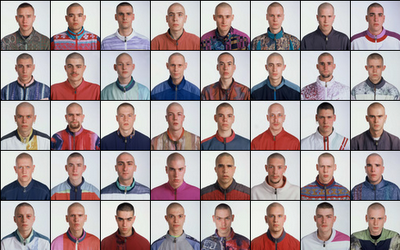
Exactitudes (= exact attitudes), by photographer Ari Versluis and stylist Ellie Uyttenbroek, is an exercise in style (or rather was, from 1994 to 2002 - it is now present online, in a traveling exhibition and in the form of a book). Style is what makes the person unique, but also, quite paradoxically, what makes her so easily categorized. Some say the search for identity isn't at all a search for authenticity (which is a controversial concept), but rather, a search for style. Identity, here, would mean a sort of a definition that allows one to make a drawing. So here we have it, those young boys are making the drawing of themselves - they are getting themselves defined, they are become unique, and totally anonymous at the same time.
It is quite an exciting balance/game/tension, between the self-as-unique and the self-as-participating. Exactitudes shows it clearly. Maybe a little too clearly. It might be because the work is somehow dated, and that, beyond the fact that styles have evolved quite a bit (another proof that identity might be more about style than we think). The pictures, their esthetic qualities, but also the way it was made: the styling, the forcing into categories. Is it necessary? The argument, found in the "about" part of the page, that everything is stylized anyway, simply doesn't seem enough. That's why the groups that speak most to me are ones where the difference, and the similitude, are there, impossible to hide, like in the Tattoo Babes series, or the Dreads one. The others often seem forced, as if the similarity sometimes wasn't enough and needed to be underscored - and it really needn't! Maybe in these two cases, the presence of the naked body seems like something more honest, less manipulated? Then again, come and think of it, the tattoos could be fake.
Labels: painting/photo
Ostrosky received her first major role playing opposite Ben Stiller, as one of the daughters of Stiller's "supposed" birth parents, in the 1996 film Flirting with Disaster.
She has also appeared in her own line of calendars as well as on the covers of several magazines. Ostrosky has been named in the Top 100 Sexiest Women of the Year in 2002, 2003, and 2004 by the readers of FHM.
Monday, September 18, 2006
Sunday, September 17, 2006
Saturday, September 16, 2006
For Al Magnus, it all started with having children. How surprizing is that? Of course, these are images of fairly tales. Some actually ring a bell. Most are rather fairy tales in themselves. But to start off, remember they were not meant for us, but for the little ones. Hopefully, that can be a good enough excuse to enjoy, as we usually enjoy the things that weren't meant for us.
How surprizing is that? Of course, these are images of fairly tales. Some actually ring a bell. Most are rather fairy tales in themselves. But to start off, remember they were not meant for us, but for the little ones. Hopefully, that can be a good enough excuse to enjoy, as we usually enjoy the things that weren't meant for us. Then, of course, there is more. The above image, called Paisagiste II (Landscape Designer II) has two versions. The first one is in color. This one, however, is quite different. By taking away the color, the general atmosphere becomes heavier. But there is another change. The boy pulling on the rope all but disappears. (Yes, there is a boy pulling on the rope). Suddenly, we discover the designer is not quite the one we thought it were. Maybe, because in the tales we know, we can only think of one designer.
Then, of course, there is more. The above image, called Paisagiste II (Landscape Designer II) has two versions. The first one is in color. This one, however, is quite different. By taking away the color, the general atmosphere becomes heavier. But there is another change. The boy pulling on the rope all but disappears. (Yes, there is a boy pulling on the rope). Suddenly, we discover the designer is not quite the one we thought it were. Maybe, because in the tales we know, we can only think of one designer. But isn't the designer someone with the power to reinvent? To construct, but also, to make a Very Silly Thing (La Grosse Betise)?
But isn't the designer someone with the power to reinvent? To construct, but also, to make a Very Silly Thing (La Grosse Betise)?
Maybe, the power of attraction of children's tales is not that they're far-fetched, incredible, fantastic, but that they design things in such a way that we feel this world-changing design on every step? This is a big difference, since we rarely associate children's stories with the creation of order. Come to think of it, it is an order that they have in common with some, maybe not all, art. And so, the trivial idea that artists are the adults that remained (or went back to being) children can be understood in a whole different way. Artists treat designing seriously.
Labels: digital, painting/photo
Friday, September 15, 2006
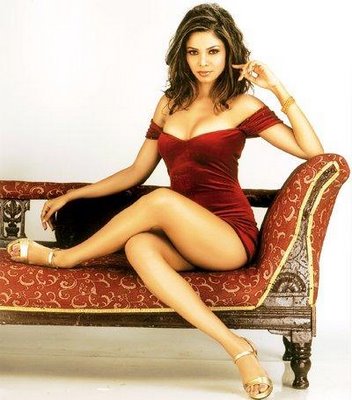 Parmita Katkar started her modelling career with winning Gladrags Mega Model South Zone 2000 contest. She participated in Femina Miss India. She is performing lead role in movie Kachchi Sadak. Kachchi Sadak is also Amrish Puri's last movie.
Parmita Katkar started her modelling career with winning Gladrags Mega Model South Zone 2000 contest. She participated in Femina Miss India. She is performing lead role in movie Kachchi Sadak. Kachchi Sadak is also Amrish Puri's last movie. Juhi Chawla is a popular Indian Bollywood actress. She was the winner of Miss India title in 1984, later she won Best Costume Award for the Miss Universe contest in 1984. She is also performing in Bas Ek Pal.
Juhi Chawla is a popular Indian Bollywood actress. She was the winner of Miss India title in 1984, later she won Best Costume Award for the Miss Universe contest in 1984. She is also performing in Bas Ek Pal. Mallika Sherawat (original name Reema Lamba) is one of the hottest Indian actress and model. She is performing in Pyaar Ke Side Effects.
Mallika Sherawat (original name Reema Lamba) is one of the hottest Indian actress and model. She is performing in Pyaar Ke Side Effects.Thursday, September 14, 2006
In February 2002, Spears starred in a film, Crossroads, which fetched her a Razzie Award for Worst Actress.
In 2004, she married dancer and aspiring rap artist Kevin Federline and the following year she gave birth to their son, Sean Preston. A couple of days ago, on September 12, 2006, she gave birth to her second son in Los Angeles.
Wednesday, September 13, 2006
Their is also a mobile game called Sameera:The Street Fighter which features Sameera as an ancient warrior princess on a mission to defeat the warrior tribes who have invaded her father’s regime.Check out here.
Her sister, Sushma Reddy made her acting debut with the film Chocolate. Her elder sister is Meghna Reddy is a popular VJ.
The work, by Maarten Vanden Eynde, is called Rave Nature, but here is something interesting: the photo's file on the artist's server is named podium. I much prefer this second name. Also, as we can read here, contrary to many other works of land art, the work as such was not the picture, but the thing itself. It was part of a festival, and was actually an installation that at night would be lit with disco lights and a stroboscope, and smoke would come out while a song would play... I'm not really sure if I still enjoy it as much. One thing is for sure: this picture certainly doesn't convey the idea of rave. Which might be part of the trick, come to think of it. As if the stage was set, but impossible to comprehend during daylight? On a more general level, it's fascinating how the opening of interpretations, as would be the case without the night party, leaving the stage as is, at the same time attracts (makes it more enigmatic) and repels (oh, yah, I get it, conceptual work, got the concept, let's go). Is it cat vs. dog? Is it about the work (over)interpreting itself? Two other pieces by the artist I particularly appreciated:
Both are from the Genetologic Research series. The second one seems to only really gain power when seen in the physical space, but we get the point.
Labels: land art/urban, sculpture
Pour les dents d'un blanc éclatant e saines (meaning: for teeth that are shining white and healthy) is an installation by Jeroen Diepenmaat. In it, stuffed birds play records by putting their bill into the groove. One of the impressive things about it is that it's not one of those suggestive works that actually only work as a symbol. It works! On his site you can listen to the sound this and other installations make, or you can choose to chill out to some collaborative re-mixing he's been making. All his works seem to be evolving around vinyl and old cars, and often include interesting ways of callaborating with others (artist, students, groups of unsuspecting passers-by...). Speaking of vinyl, it's impressive how old-style vinyl lovers keep reinventing themselves. Is there anything better for creativity than apparently disqalifying limits? Could this be a difference between the amateur and the professional? The amateur doesn't need limits to his areas of investigation...
(via)
Tuesday, September 12, 2006
Oh, entertain me, do entertain me, make silly things, funny things, call them art, call them rat, but make them pleasant and direct and, why not, simple, and use the tongue of greatest lovers, the tongue that tickles, that brings emotions to the flower of the skin, as the Portuguese like to say...
More here.
He's for a jig or a tale of bawdry, or else he sleeps. - Hamlet
(via)
Labels: funny, painting/photo
Monday, September 11, 2006

Jyothika Sadanah or simply Jyothika was born on 18 October 1978 in Mumbai, India. She is an Indian Tamil and Telugu movie actress.
Her first movie was Doli Saja ke Rakhna, directed by Priyadarshan and opposite Akshaye Khanna. Her most successful movie to date is Chandramukhi in 2005 opposite Rajinikanth. She also won Filmfare Best Actress award for this movie.
She has been romantically linked with Surya for over 6 years and now today on Sept 11, 2006 she married Surya. Hearty Congratulations to her !!!!
Sunday, September 10, 2006
***
I found the second of these two works by Peter Coffin as an illustration to this article by art critic Jerry Saltz. Two other discoveries Saltz provides are the Strange Powers exhibition at the Creative Time gallery (unfortunately judging from the participating artists, and not a visit...) and a quote by Erik Fishl:
Imagine calling two pets, one a dog, the other a cat. Asking a dog to do something is an amazing experience. You say, "Come here, Fido," and Fido looks up, pads over, puts his head in your lap, and wags his tail. You've had a direct communication with another species; you and Fido are sharing a common, fairly literal language. Now imagine saying, "Come here, Snowflake" to the cat. Snowflake might glance over, walk to a nearby table, rub it, lie down, and look at you. There's nothing direct about this. Yet something gigantic and very much like art has happened.
A few questions: If the dog stands for entertainment (as I believe it could), doesn't it value entertainment? I mean, in this example, why would the cat always be the better of the two? Don't you ever get the feeling the cat simply doesn't get it? And what about cat cynicism? Where does that leave art amateurs, huh?
Found thanks to the nonist
Labels: land art/urban, sculpture, theory
She defeated Justine Henin-Hardenne, 6-4 6-4 in US Open 2006 final.
Maria was awarded by Maxim magazine as Hottest female of the year 2006.
To view more pictures of Maria, visit here.
In 2006, Justine became the first woman since Martina Hingis in 1997, to reach the finals of all the four Grand Slam titles by reaching the final of the U.S. Open after reaching the final of Wimbledon and the Australian Open and winning the French Open.
Justine lost to Maria Sharapova of Russia 4-6 4-6 in the US Open final today.
To know more about Justine and for latest updates visit here










